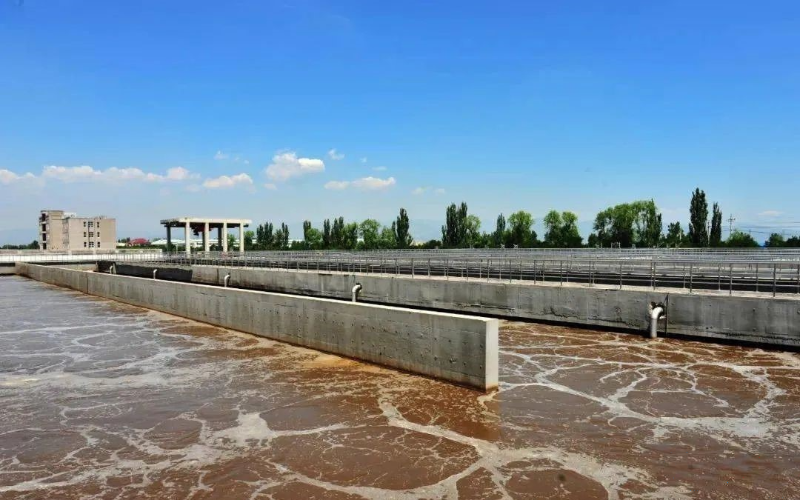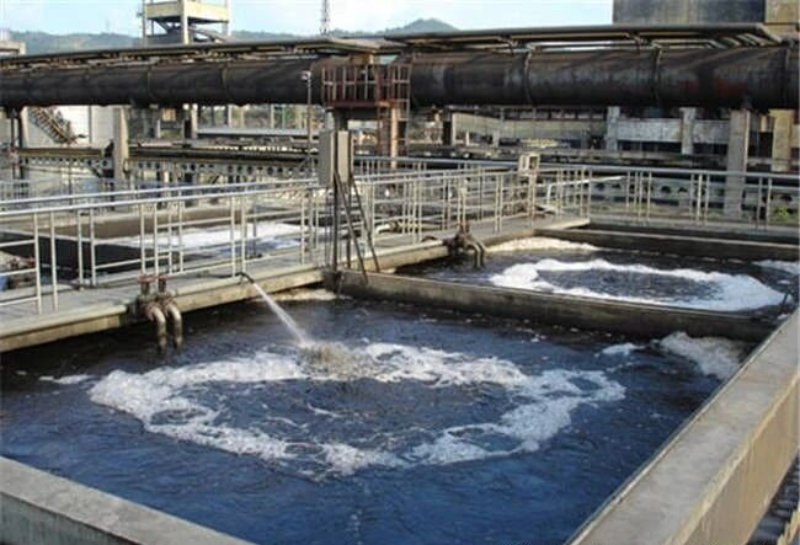Consultation hotline:
(+86)0532-88988868
(+86)0532-88988868

01 Current situation of water source pollution in China
China is currently facing a shortage of water resources, with over 400 cities experiencing severe water shortages, including more than 100. Due to its large population, the per capita water resources are only 25% of the world's per capita, making it one of the world's water poor countries. Due to the uneven distribution of water sources, there are spatial and temporal differences such as more in the south and less in the north, more in the east and less in the west, and more in summer and less in winter. However, under adverse conditions, the arbitrary discharge of industrial wastewater and agricultural sewage without treatment has caused more serious water source pollution. According to the 2010 national environmental quality data released by the Ministry of Environmental Protection, China's surface water is seriously polluted, and seven major water systems (the Yangtze River, the Yellow River, the the Pearl River, the Songhua River, the Huai River, the Hai River and the Liao River) are slightly, moderately, and severely polluted. The lake eutrophication problem is prominent. In recent years, major water pollution incidents have occurred frequently, with an incidence rate of up to 50%. The problem of water shortage is becoming increasingly serious.
1. Traditional sewage treatment technology
Water pollution usually refers to the deterioration of water quality caused by human factors, which reduces the value of water use. The main pollutants are solid waste and chemical substances (aerobic organic matter, recalcitrant organic matter, heavy metals, plant nutrients, acids, alkalis, and petroleum substances).
The commonly used sewage treatment technologies in China currently include:
(1) Physical methods refer to separation techniques for insoluble pollutants, such as gravity settling, coagulation clarification, buoyancy flotation, centrifugal separation, magnetic separation, etc.
(2) Chemical methods refer to the chemical conversion techniques of pollutants, including acid-base neutralization, chemical precipitation, oxidation-reduction, and chemical physical disinfection.
(3) Physical and chemical separation techniques for dissolved pollutants (adsorption method, ion exchange method, membrane separation method, evaporation, freezing method).
1.2 Disadvantages of Common Methods
Physical methods require a large area, high infrastructure and operating costs, high energy consumption, complex management, and are prone to sludge expansion; The equipment cannot meet the requirements of high efficiency and low consumption, and the effect is not significant when used alone. Chemical methods have high operating costs, consume a large amount of chemical reagents, and are prone to secondary pollution. In most cases, the two must be used in combination.

02 Microbial Technology
How to make the urban sewage treatment process develop towards low energy consumption, high efficiency, less residual sludge, the most convenient operation and management, as well as achieving sustainable directions such as phosphorus recovery and treated water reuse, and the adopted technology must be based on low energy consumption and minimal resource loss? Microbial technology meets the above requirements.
2.1 Introduction to Microorganisms
Microorganisms are a type of small, single celled or multi celled organism with relatively simple individual structures, or even lower organisms without cellular structures. They are tiny living organisms that cannot be seen or touched by the eyes, and can only be seen with the help of optical microscopes and electron microscopes. Microorganisms include bacteria, viruses, fungi, etc.
2.2 Microbial Technology and Applications
Microbial technology is a single or comprehensive modern artificial technology system that utilizes the metabolic reaction processes and biosynthetic products (including enzymes) of microorganisms to monitor, evaluate, remediate, and repair polluted environments. It not only incorporates all the characteristics of biotechnology, but also integrates environmental pollution prevention and other engineering technologies. Currently, it has gradually developed into an effective means of solving increasingly serious environmental problems, especially water pollution, with both economic and environmental benefits.
According to the different processes and types of products of microbial degradation, microbial treatment is mainly divided into aerobic treatment, anaerobic treatment, and facultative treatment.
(1) Aerobic microbial treatment, under conditions of sufficient oxygen, microorganisms decompose organic matter through aerobic respiration. The aerobic microbial treatment process mainly includes:
② The activated sludge process has the advantages of high treatment capacity and good effluent quality. This method mainly consists of an aeration tank, a sedimentation tank, a sludge reflux system, and a residual sludge discharge system. Wastewater and recycled activated sludge enter the aeration tank together to form a mixed solution. An aeration tank is a bioreactor that is filled with air through aeration equipment. The oxygen in the air dissolves into the mixed liquid, generating aerobic metabolic reactions and allowing the mixed liquid to be sufficiently stirred and suspended. In this way, the organic matter and oxygen in the wastewater can fully contact and react with microorganisms. Subsequently, the mixture enters the sedimentation tank, where suspended solids in the mixture settle and separate from water. The purified water flows out of the sedimentation tank. In addition to the ability to oxidize and decompose organic matter, activated sludge also needs to have good coagulation and sedimentation properties to separate it from the mixed liquid and obtain clear effluent.
③ Biofilm method is a type of method that uses the biofilm formed by microorganisms attached and grown on the surface of a solid carrier to remove dissolved organic pollutants from wastewater. Biofilm method can be divided into drip filter method (or biofilter), biological disc method, contact oxidation method, and fluidized bed biofilm method.
(2) Anaerobic microbial treatment, under anaerobic conditions, anaerobic bacteria decompose organic matter through anaerobic respiration or fermentation, and the organic matter is ultimately converted into methane, carbon dioxide, water, as well as small amounts of hydrogen sulfide and ammonia. The anaerobic microbial treatment processes mainly include the following:
① Anaerobic digestion tank is mainly used for treating sludge and manure, and is not suitable for the treatment of domestic and industrial wastewater.
② Anaerobic contact method improves treatment efficiency on the basis of anaerobic digestion tank. There is fixed packing inside the anaerobic filter, and the biofilm attached to it further improves the treatment efficiency. At present, it has been widely applied in the treatment of industrial wastewater containing easily degradable soluble compounds.
(3) Microbial facultative treatment is called facultative treatment when aerobic and anaerobic coexist in the same treatment process. Sometimes, the coexistence of aerobic and anaerobic can actually improve the treatment effect, with aerobic bacteria playing the main role. However, without anaerobic bacteria and a small amount of facultative bacteria, it is impossible to achieve the expected treatment effect.
2.3 Advantages compared to traditional technologies
Compared with the current physical and chemical methods, microbial technology has a series of characteristics and advantages in sewage treatment:
① It has strong adsorption capacity and good settling ability, strong degradation ability, and does not require high temperature, high pressure, or mild conditions. Pollutants can be efficiently and relatively thoroughly treated through enzyme catalysis. The treatment water volume is large, and the treatment cost is low, only 30% to 50% of physical and chemical methods.
② Microorganisms are rich in species, have a wide range of resources, and possess multiple metabolic types. They can almost degrade or transform various natural substances present in the environment. They are easy to cultivate, reproduce quickly, have strong adaptability to the environment, and are easy to mutate. Once new compounds appear, they can gradually generate new enzyme systems through spontaneous or induced production, possess new metabolic functions, and degrade or transform those new compounds. Proper cultivation and reproduction, especially domestication under certain conditions, can make it adapt well to various toxic industrial wastewater, domestic sewage and other environments. By targeted screening, cultivation, and domestication of bacterial strains, most organic compounds can be biodegraded and have a wide range of applications.
③ Microbial treatment can not only remove organic matter, pathogens, and toxic substances, but also eliminate odors, improve transparency, reduce color, and achieve good treatment effects. As long as suitable microorganisms are found and appropriate conditions are given, all pollutants can be degraded or transformed.
④ Low impact on the environment, no secondary pollution, and few remaining issues.
⑤ The chance of direct exposure to pollutants is reduced.
⑥ On site processing, easy to operate, can avoid laying unsightly mechanical equipment, reduce land occupation, infrastructure costs, operating costs, energy consumption, management, etc., and can meet the requirements of high efficiency and low consumption.


